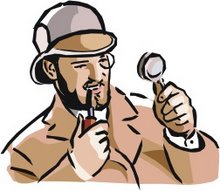 The start of every project brings more questions than answers. Projects are actually conversations seeking to answer questions more than they ever are scripted performances.
The start of every project brings more questions than answers. Projects are actually conversations seeking to answer questions more than they ever are scripted performances.In this spirit, the following questions (from the True North Project Development Workbook) seem germane:
- What is this project's success criteria? How will the community measure the success of this project as it unfolds and after it's completed?
- What is the nature of this project and how does this nature fit with the preferences of the project's community? Do we need to go slower than we'd prefer? Faster? Can we be sloppy and still succeed or do we need to be careful and precise? Can we make public mistakes without being vilified? How perfect is good enough?
- What mindsets surround this effort? Is the community skeptical? Optimistic? Generous? What mindset will best serve this project?
- How clear is the purpose? How stable the goals? How adequate the resources (time, money, material, people)? How flexible is the schedule? How familiar is the technology? How many points of focus? How stable are the internal and external environments? How many customers must be satisfied? How dispersed is the community, physically and emotionally? This project seems more information-intensive than stuff-intensive, which means that it can't be managed as if it were a construction project coordinating stuff in space and time.
- What are the technical, administrative, and people leadership requirements and who will satisfy these. (It takes a community to lead a project.)
- What are the characteristics of the key organizations involved in this project? What's the informal organization chart? Who gets to say who gets to say? What local customs must the project learn to comfortably mirror?
- How does this project relate to the Port's values? EWU's values? Constituent values? What business priorities does this project directly/indirectly support?
- What happened the last time the Port sponsored a project like this? History can inform us about likely future patterns.
- Where did the idea for this project come from? Who's idea was it?
- What will this project be as an end result? Why is that important? How will we know the project is completed, in objective and measurable terms?
- What product or service will the project deliver expressed in terms of major functions and features?
- When MUST the project be completed?
- What quantity of the product or service will be delivered?
- What macro-level resources are needed to complete this project? (Money, raw materials, people, equipment?)
- What end result must the project satisfy?
- What are the critical success factors? (Fewer than ten, stated positively!)
- What are the certain uncertainties with potential for disrupting the project (risks)? How will these be ameliorated?
- Who's in this project's community? (Include everyone who can effect or be effected by this effort!)
- What support does this project need from each community member? What's their project within this project? What's the strategy for getting the support you need?
- How will the project be designed? Major philosophy and stages.
- What high-level milestones must be met?
- What are the discrete task assignments?
- Who's responsible for what?
- How much will this project cost to complete, including administration, materials, travel, and time?


